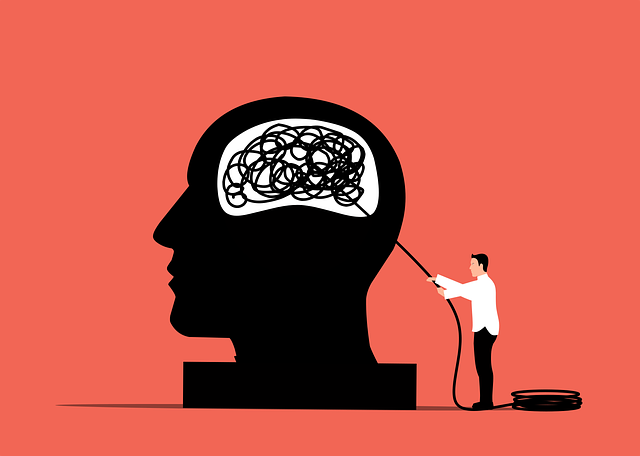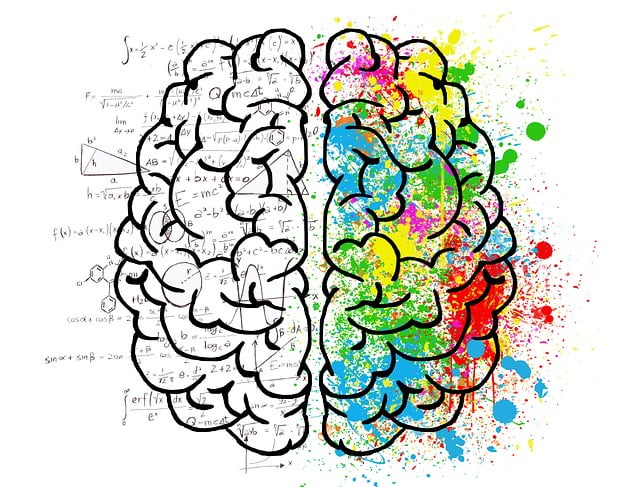Generalized Anxiety Disorder (GAD) is a common but debilitating mental health issue characterized by excessive worry and fear that interferes with daily life. Treatment focuses on psychotherapy, especially Cognitive Behavioral Therapy (CBT), which helps individuals challenge negative thought patterns and learn coping mechanisms. Other effective techniques include exposure therapy and mindfulness-based therapies. CBT involves identifying distorted thoughts, learning relaxation methods, and gradually facing fears. While therapy leads to improved symptoms, maintaining gains requires ongoing strategies like relapse prevention and support groups. These comprehensive approaches are crucial for managing GAD and enhancing long-term mental well-being.
Generalized Anxiety Disorder (GAD) is a prevalent mental health condition characterized by persistent, excessive worry and fear that interferes with daily life. This article explores comprehensive strategies for managing GAD, focusing on the pivotal role of psychotherapy in treating this complex disorder. We delve into various therapeutic approaches, highlighting evidence-based methods like Cognitive Behavioral Therapy (CBT), along with other effective techniques proven to reduce symptoms and enhance well-being. Discover insights into long-term management and relapse prevention for optimal anxiety treatment.
Understanding Generalized Anxiety Disorder (GAD)

Generalized Anxiety Disorder (GAD) is a common yet debilitating mental health condition characterized by excessive and persistent worry or fear that interferes with daily life. Unlike specific phobias, which focus on particular objects or situations, GAD involves a general feeling of unease and tension, often accompanied by physical symptoms like restlessness, fatigue, difficulty concentrating, and sleep disturbances. The root causes of GAD can vary widely, from genetic predisposition to environmental stressors, trauma, or other mental health conditions.
Understanding GAD is crucial in the context of anxiety treatment. Many individuals struggling with GAD may experience a range of symptoms that significantly impact their overall well-being. Psychotherapy, particularly cognitive-behavioral therapy (CBT), has proven effective in treating GAD by helping individuals identify and challenge negative thought patterns and behaviors contributing to their anxiety. Through psychotherapy, patients gain valuable coping strategies to manage their worries and develop a more balanced perspective, leading to improved quality of life.
Common Symptoms and Impacts of GAD

Generalized Anxiety Disorder (GAD) is characterized by excessive and uncontrollable worry about a range of issues, from work or health to everyday routines. Individuals with GAD often experience physical symptoms such as restlessness, fatigue, difficulty concentrating, irritability, muscle tension, and sleep disturbances. These worries are not focused on specific concerns but rather feel overwhelming and persistent, often interfering with daily functioning.
The impacts of GAD can be profound. It may lead to significant changes in behavior, including avoidance of situations or activities that trigger anxiety. Individuals might struggle in social settings or at work due to their persistent worry and fear. The constant state of alarm can take a toll on mental health, leading to feelings of hopelessness and decreased quality of life. Effective anxiety treatment, often involving psychotherapy, is crucial for managing these symptoms and restoring a sense of control over one’s life.
Traditional Approaches to Anxiety Treatment

In the realm of anxiety treatment, traditional approaches have long been the cornerstone for managing generalized anxiety disorder (GAD). Psychotherapy stands as a primary method, offering various techniques to help individuals confront and overcome their anxious thoughts and behaviors. One well-established therapy is cognitive behavioral therapy (CBT), which focuses on identifying and modifying negative thought patterns and teaching practical coping strategies. Through CBT, folks learn to challenge distorted beliefs, face fears gradually, and change unhelpful habits that fuel anxiety.
Another traditional approach is exposure therapy, a powerful tool within the realm of psychotherapy for anxiety treatment. It involves gradual and controlled exposure to feared situations or objects, enabling individuals to confront their anxieties head-on. By facing these triggers in a safe environment, folks with GAD can learn to manage their responses, reduce avoidance behaviors, and ultimately gain a sense of control over their lives. These traditional methods provide a solid foundation for those seeking effective anxiety treatment.
The Role of Psychotherapy in GAD Management

Psychotherapy plays a pivotal role in managing Generalized Anxiety Disorder (GAD). Through various evidence-based therapeutic approaches, such as cognitive behavioral therapy (CBT) and mindfulness-based therapies, individuals can learn to challenge negative thought patterns and develop effective coping strategies. These techniques help patients gain a deeper understanding of their anxiety triggers and equip them with tools to reduce excessive worry and improve overall well-being.
By engaging in psychotherapy, individuals with GAD can experience significant improvements in their symptoms. Regular sessions allow for open discussions about anxious thoughts and behaviors, fostering a sense of control and empowerment. Psychotherapy provides a safe space to explore underlying issues contributing to anxiety, enabling personalized treatment tailored to each person’s unique needs. This comprehensive approach not only alleviates symptoms but also promotes long-term resilience and enhanced mental health.
Exploring Evidence-Based Therapies for GAD

When it comes to addressing Generalized Anxiety Disorder (GAD), evidence-based therapies have proven highly effective in managing symptoms and improving overall well-being. Cognitive Behavioral Therapy (CBT) stands out as a cornerstone of anxiety treatment, focusing on identifying and modifying negative thought patterns and behaviors that contribute to excessive worry. This therapy equips individuals with practical coping strategies, helping them face their fears and reduce anxiety responses.
Additionally, other therapeutic approaches like Mindfulness-Based Therapies (MBT) gain traction for GAD management. MBT incorporates mindfulness meditation practices to foster present-moment awareness, regulate emotions, and decrease rumination. Research supports the effectiveness of these therapies, offering individuals valuable tools to navigate and overcome the challenges posed by generalized anxiety.
Cognitive Behavioral Therapy (CBT): A Step-by-Step Guide

Cognitive Behavioral Therapy (CBT): A Step-by-Step Guide
Cognitive Behavioral Therapy, or CBT, is a structured and evidence-based anxiety treatment that focuses on identifying and changing negative thought patterns and behaviors. The first step involves understanding and challenging distorted thoughts that contribute to excessive worry and anxiety. This process often reveals irrational beliefs and assumptions that are then replaced with more realistic and balanced perspectives. For instance, if someone consistently thinks, “I’m going to fail this test,” CBT encourages them to question this thought by gathering evidence for and against it.
The second step entails learning relaxation techniques to manage physical symptoms of anxiety. Techniques such as deep breathing exercises, progressive muscle relaxation, and mindfulness meditation help individuals calm their bodies and minds. Third, CBT introduces gradual exposure to feared situations or objects in a safe and controlled manner, desensitizing the individual to triggers and reducing avoidance behaviors. This step-by-step approach equips individuals with practical tools to manage anxiety symptoms and improve their overall well-being.
Other Effective Psychotherapeutic Techniques

In addition to cognitive-behavioral therapy (CBT), several other effective psychotherapeutic techniques have proven beneficial in treating generalized anxiety disorder (GAD). One such approach is mindfulness-based therapies, which focus on helping individuals become more aware of their thoughts and feelings without judgment. This heightened awareness allows them to better manage and reduce anxious responses over time.
Another valuable method is exposure therapy, where patients are gradually exposed to situations or objects that trigger anxiety in a safe and controlled environment. By facing these fears repeatedly, individuals can learn to control their reactions and ultimately experience less distress in real-life scenarios. These diverse therapeutic approaches offer personalized strategies for anxiety treatment, catering to the unique needs of each individual struggling with GAD.
Long-Term Success and Relapse Prevention Strategies

Many individuals who seek psychotherapy for Generalized Anxiety Disorder (GAD) are eager to know about long-term success and relapse prevention. After completing a structured course of therapy, such as cognitive behavioral therapy (CBT), sustained improvements in symptoms can be expected. However, it’s important to remember that managing GAD is an ongoing process.
Relapse prevention strategies play a crucial role in maintaining progress. This involves learning coping mechanisms, identifying triggers, and developing plans for managing stress and anxiety in the long term. Regular check-ins with a therapist or support group participation can also help prevent relapse by providing ongoing guidance and accountability. By integrating these strategies into daily life, individuals can enhance their overall mental well-being and effectively manage symptoms of GAD over time.
